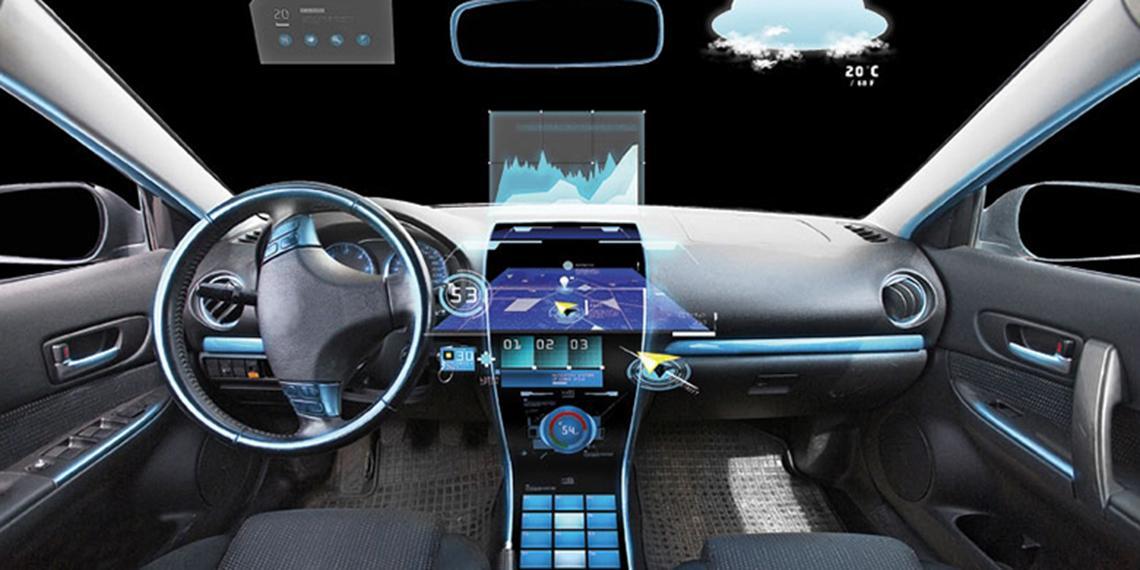Ever dreamed of kicking back, letting go of the wheel and reading the paper during the commute to work? In large cities, that could soon be a reality. We have reached an era where every single device or object is connected. We have reached a point where our cars can take us for a long ride without even bothering to drive ourselves.
As a start, Toyota unveiled a car that can drive itself along a highway. The modified Lexus GS uses sophisticated sensors to navigate roads, merge lanes and overtake other vehicles.
In its current incarnation, the car only switches to fully automated mode once it reaches the less frenetic confines of a highway and passes a sensor. ""The car we have here is able to drive independently from the highway entrance to the exit,"" said Yoshida Moritaka, Toyota's chief safety technology officer.
But Toyota hopes the technology will help it one day build an entirely driverless car as well as reduce accidents and congestion. It even announced plans to invest $50 million in building artificial intelligence into its vehicles.
As we notice, several major carmakers and technology giants have been pursuing autonomous vehicle technology. Google has been testing self-driving cars in Silicon Valley, while Nissan has vowed to put an automated car on Japan's highways as soon as 2016. In 2018, Nissan models should have the ability to avoid hazards and to change lanes, and by 2020, vehicles should be able to autonomously manoeuver through crowded city roads. Apple is also rumored to be pursuing the technology.
Moreover, the electric vehicle maker, Tesla, is taking a major step toward self-driving cars by installing new autopilot software to automatically change lanes, manage speed and even hit the brakes. The feature was added to thousands of Tesla's Model S cars already on the road, yet drivers should stay careful. ""We're being especially cautious at this early stage so we are advising drivers to keep their hands on the wheel just in case,"" Tesla founder and chief executive, Elon Musk, told reporters. ""In the long term, people will not need hands on the wheel, and eventually there won't be (steering) wheels or pedals.""
By June 30, Tesla had already sold nearly 80,000 of the four-door sedans. Autopilot allows Model S to steer within a lane, change lanes by tapping a turn signal and manage speed using ""traffic-aware"" cruise control. The car can also scan for available parking spaces, alert drivers when one is spotted and then parallel park on command. But the new software has its limits; it still can't recognize the color of traffic lights, though it can alert drivers to parking spots.
Tesla Autopilot functions like the systems that airplane pilots use when conditions are clear. The driver is still responsible for, and ultimately in control of the car.
Autonomous driving has definitely become the new buzzwords in the automobile sector. Most automakers are rushing to invest in driverless technology, seen as the future in the industry.
However, the fact that Tesla cars are electric makes it stand out. The company boasts supercar acceleration that allows vehicles to go from zero to 60 miles per hour in 2.8 seconds.
Among the best developed autopilot prototypes is Alphabet's Google Car, already on the road in several US states. The Google car uses the same technology as its fleet of Lexus SUVs, which has logged about a million miles (1.6 million kilometers).
Mercedes as well has presented a futuristic car with a traffic-jam assist that allows the car to steer, brake and accelerate on its own at slow speeds.
What's more surprising is that semi-autonomous cars have already hit the road, capable of gauging distance, accelerating and breaking automatically and rectifying the situation if a distracted driver approaches another car too quickly.
Los Angeles Mayor, Eric Garcetti, got behind the wheel of such a vehicle, Volvo XC90, as he kicked off a connected car exhibition at Los Angeles Auto Show. ""I think that 20 years from now it's going to be the norm,"" he said.
The vehicles are meant to help out ""in case of commute and congestion, when drivers are most frustrated,"" Marcus Rothoff, Volvo's autonomous driving program, said.
Automakers are now focused on the next generation of smart vehicles: the fully autonomous car, which would allow drivers to read, watch a movie or even send emails. Such vehicles are a dream for residents of large cities like Los Angeles, the capital of US traffic jams, where drivers frequently spend two hours a day on the road.
""We plan to put 100 autonomous cars in consumer hands by the end of 2017,"" Lex Kerssemakers, head of American operations for the Swedish automaker, said.
Manufacturers worldwide are racing to capture the huge market potential. The driver will simply enter a destination and the navigation system, sensors and software will do the rest.
However, the question that comes to mind: What happens if the car hits a school bus or kills its driver? ""These questions will take more time, even though the vehicles have a much faster reaction time than for a human,"" said Jessica Caldwell, analyst at Edmunds.com.
But according to Rothoff, drivers must ""trust the system because if you don't trust it you cannot use this (spare) time in a good way"" for other activities like reading. The objective is for the technology to be so reliable that the manufacturer can tell customers that they won't be responsible for any accidents while on autopilot, he said.
If we have reached a time where smartcars will do the driving for us and flying cars have arrived us as well, to what extent will technology reach?
